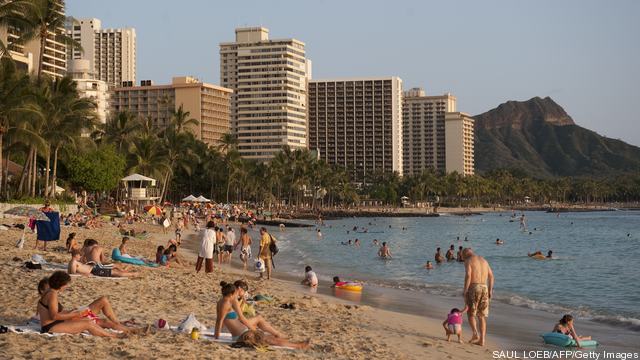The state of Hawaii: remote, tropical and a haven for tourists. But for locals the remoteness of the islands poses a problem. Since the state producers no hydrocarbon resources of its own, it has to import all of its energy needs, resulting in electricity prices as much as three to five times the national average.
In an effort to offset the price of oil and its adverse environmental impact, the state has plans to import liquefied natural gas (LNG), a cheaper and cleaner burning fossil fuel. Last week, Alicia Moy, president and CEO of Honolulu-based Hawaii Gas, said that shipping LNG to the Hawaiian islands could save the state $55 million per year in fuel costs if 50 percent of its imported oil is replaced by LNG. If 100 percent is replaced, Hawaii could save around $100 million each year.
Currently, oil fuels more than 70 percent of the state’s electricity generation. By way of contrast, petroleum use for electricity generation is less than 1 percent in the US as a whole. Yet, Hawaii has been busy. It cut its hydrocarbon use (oil and coal) for electricity generation from 90 percent just six years ago by using renewables, including geothermal, run-of-river hydroelectric sources, wind and solar capacity. LNG use for the state is a relatively new development.
Hawaii Gas said in December that it was seeking proposals for the provision of an LNG Floating Storage and Regasification Unit (FSRU) and associated services to receive, store and regasify LNG for distribution. The company said it had invited LNG suppliers worldwide to submit proposals. Proposals were submitted for two levels of LNG demand: a minimum of 300,000 metric tonnes per annum (MTPA) equivalent and 1 million MTPA equivalent.
Hawaii Gas wants to use LNG to serve its 70,000 existing gas customers and meet demand statewide for power generation, which includes Hawaiian Electric Co. Price estimates to include LNG in Hawaii’s electrical energy mix range between $337 to $437 million. It hopes to start receiving LNG shipments by 2019.
In March, Hawaii Gas confirmed that it had secured bids from what it called 30 of the world’s largest and most experienced natural gas companies. The bids are currently under review, while the names of the bidding companies were not disclosed. In September, the Toronto-based Financial Post reported that Vancouver, B.C.-based FortisBC Energy Inc. was expected to start supplying bulk LNG shipments to Hawaiian Electric Co. under a 15-year agreement starting mid-2017, subject to regulatory approvals.
If Hawaii starts to receive LNG by bulk shipment it will become part of a growing trend. In August, the US Energy Information Administration (EIA) said US island states and territories – Hawaii, the territories of Guam, the Northern Mariana Islands, American Samoa in the Pacific, Puerto Rico and the U.S Virgin Islands in the Caribbean — would soon be able to diversify their energy sources to include natural gas, because relatively low natural gas prices and new shipping technology may allow these islands to import LNG. In the past, LNG was not an option for these areas because LNG has traditionally been shipped in bulk carriers in quantities far greater than many island economies could absorb.
Now, using standardized cryogenic (refrigerated) shipping containers allows small amounts of LNG to be trucked, railed, and shipped like other containerized cargoes. Once received by ship, the LNG is connected to portable regasification units adjacent to electric power plants or industrial facilities.
However, LNG’s long-term use in Hawaii is far from certain. Despite the economic and environmental benefits that the state would derive by using natural gas instead of oil, many argue that gas is still a hydrocarbon and therefore a greenhouse emissions contributor. They advocate using natural gas as part of the state’s energy mix, but only in the short to medium term, until renewables gain more ground.
The idea is even motivating the state’s legislators. Hawaii House Bill 1286, which was proposed late last month, mandates that the use of LNG in the state doesn’t slow the development and use of renewable energy sources, reaffirms Hawaii’s need to cut its dependence on imported fuels and encourages utilities to make the social and financial interests of ratepayers a priority. The state hopes to eventually go completely green. There is pending legislation requiring it to be 100 percent renewable by 2040.

